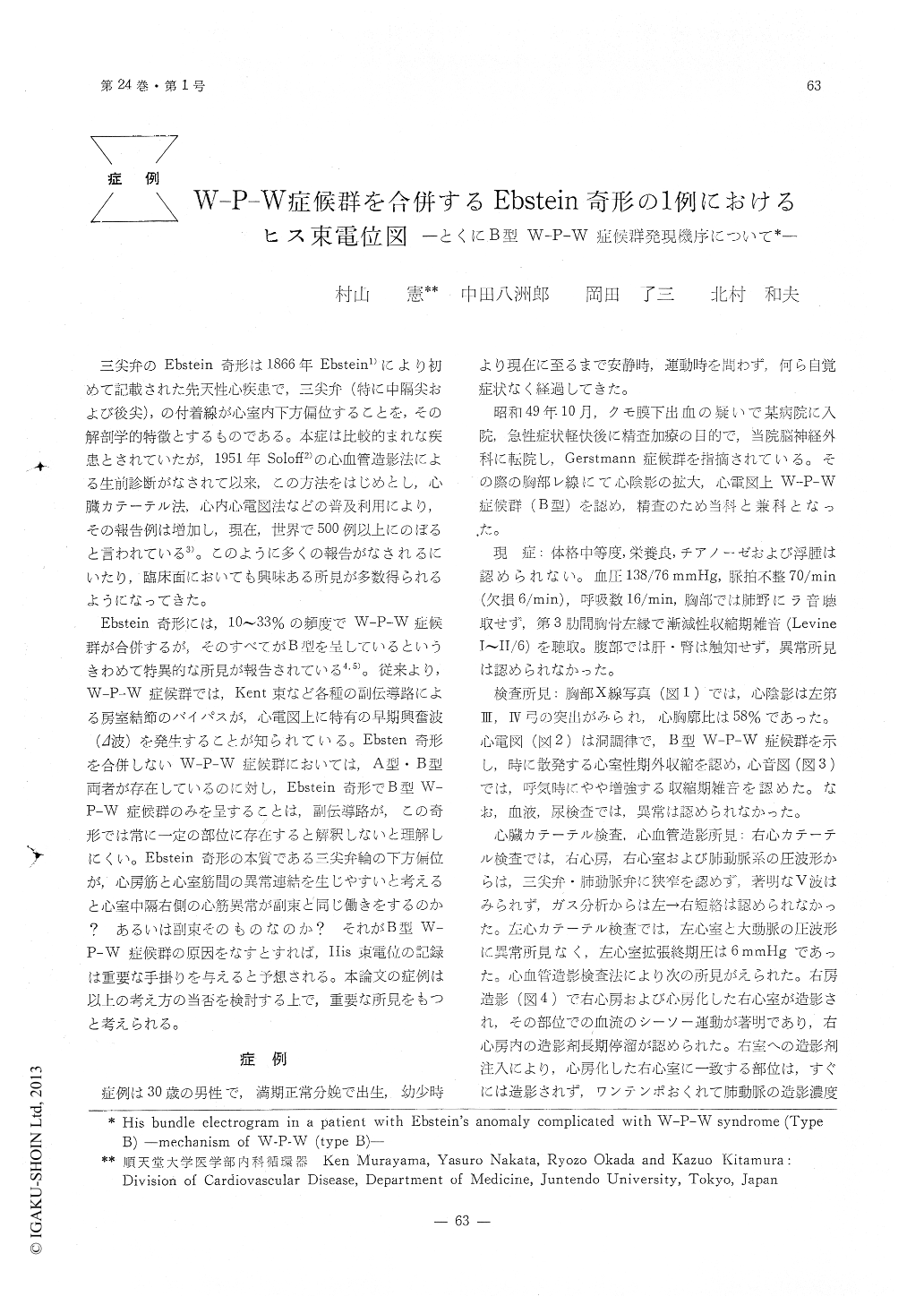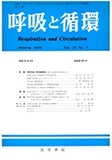Japanese
English
- 有料閲覧
- Abstract 文献概要
- 1ページ目 Look Inside
三尖弁のEbstein奇形は1866年Ebstein1)により初めて記載された先天性心疾患で,三尖弁(特に中隔尖および後尖),の付着線が心室内下方偏位することを,その解剖学的特徴とするものである。本症は比較的まれな疾患とされていたが,1951年Soloff2)の心血管造影法による生前診断がなされて以来,この方法をはじめとし,心臓カテーテル法,心内心電図法などの普及利用により,その報告例は増加し,現在,世界で500例以上にのぼると言われている3)。このように多くの報告がなされるにいたり,臨床面においても興味ある所見が多数得られるようになってきた。
Ebstein奇形には,10〜33%の頻度でW-P-W症候群が合併するが,そのすべてがB型を呈しているというきわめて特異的な所見が報告されている4,5)。従来より,W-P-W症候群では,Kent束など各種の副伝導路による房室結節のバイパスが,心電図上に特有の早期興奮波(Δ波)を発生することが知られている。Ebstein奇形を合併しないW-P-W症候群においては,A型・B型両者が存在しているのに対し,Ebstein奇形でB型W-P-W症候群のみを呈することは,副伝導路が,この奇形では常に一定の部位に存在すると解釈しないと理解しにくい。
A 30 year-old man with Ebstein's anomaly associated with type-B, W-P-W syndrome is reported.
Ebstein's anomaly was reported more than 500 cases, since, the first description in 1866.
In clinically remarkable findings, pre-excitation is revealed in the electrocardiograms of 10-30% of patients with Ebstein's anomaly, and it is always of the type B.
The purpose of this report is to point out the etiopathogenesis of the W-P-W syndrome, type B in Ebstein's anomaly by reviewing our case.

Copyright © 1976, Igaku-Shoin Ltd. All rights reserved.


